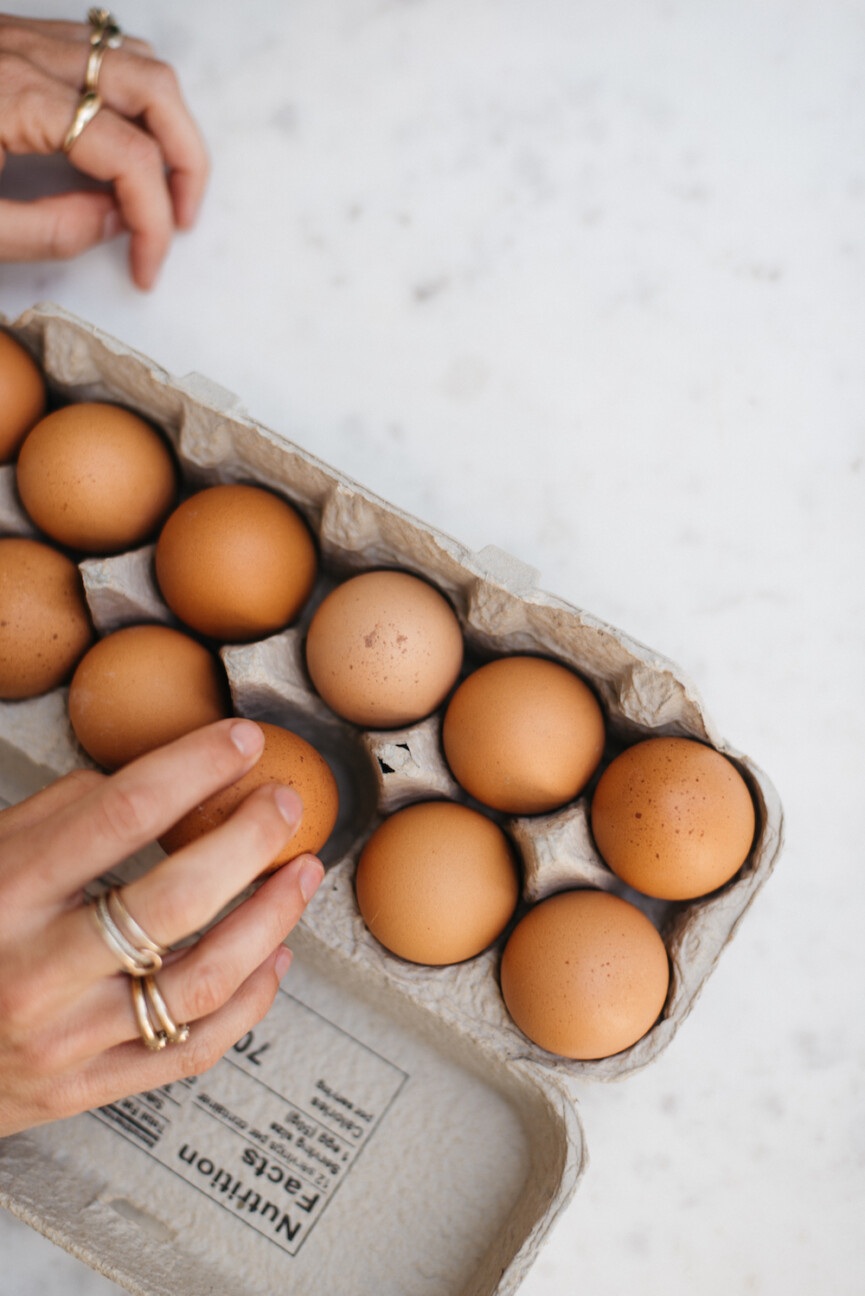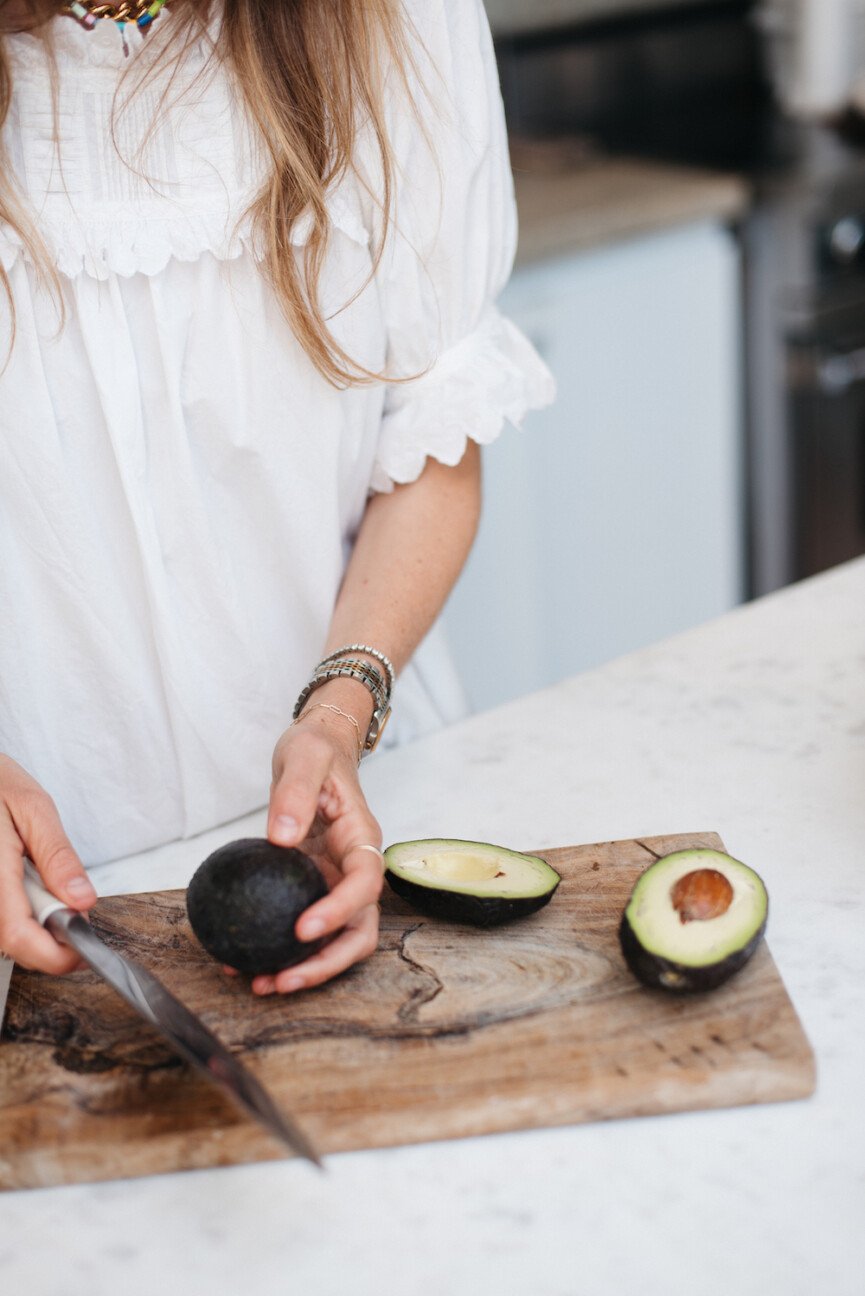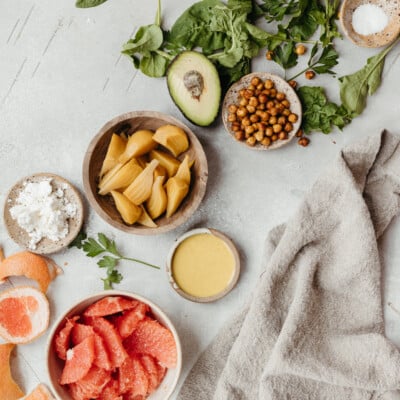Many of us are becoming aware of the positive impact balanced blood sugar levels can have on our health—both in the short and long term. In the short term, you might experience more energy, a steadier and better mood, improved sleep, decreased cravings, and even weight loss. When it comes to prioritizing stable, balanced glucose levels in the long term, you can effectively reduce your risk of heart disease, diabetes, and other chronic health issues.
Managing your blood sugar levels can significantly impact the quality of your life and your ability to reach your health and wellness goals. Today, I’m diving into all things blood sugar and sharing five energizing breakfasts to balance blood sugar. Time to get started.
Featured image by Michelle Nash.

As a board-certified nutritionist, classically-trained chef, and toddler mom, Mia understands how to blend nutrition science with exciting flavor combinations and the practicality needed to make healthy habits stick. Mia offers one-on-one coaching programs and online courses with recipes, nutrition and lifestyle tips to help her people find realistic and enjoyable ways to improve their health and quality of life. She is the Author of The Well Journal, and will release her first cookbook in January 2023. Mia lives in Los Angeles, California with her husband and son.
Understanding Blood Sugar Levels
Think of your blood sugar levels like a horizon. When your blood sugar levels spike too quickly, they fall just as fast, leading to a crash. Those crashes can bring along feelings of fatigue, irritability, and cravings for foods that will spike your blood sugar levels again. This is why breakfast is especially important.

If you start the day with a balanced meal, you’re less likely to hop on the blood sugar rollercoaster, which means fewer cravings, more energy, and more control over your food choices.
Carbohydrates and Blood Sugar
To better understand this concept and how to regulate your blood sugar levels, let’s take a look at how carbohydrates are metabolized.
Carbohydrates from grains, legumes, fruits, vegetables, and anything with sugar get broken down into glucose (or sugar) molecules. Glucose is the dominant source of ATP, our body’s energy currency, and is tightly regulated by the hormones insulin and glucagon. When our blood sugar levels are too high, insulin is released, which helps our muscles, liver, and fat cells store glucose. Conversely, when our blood sugar levels are low, the hormone glucagon is released to increase our blood sugar levels.
Looking for ways to balance your hormones naturally? Check out this guide.

What is a balanced breakfast?
A balanced breakfast includes adequate protein (for most women that will be around 15-25 grams), fiber, and healthy fats. I try to keep my sugar intake under 10 grams in the morning to ensure a more elongated blood sugar curve and mitigate potential spikes. This could include about ½ cup of fruit, which has the added benefit of vitamins, minerals, and antioxidants.
5 Best Breakfasts to Balance Blood Sugar
- Protein smoothies
- Breakfast tacos with scrambled eggs, bacon, spinach, and avocado
- Plain yogurt with berries and nuts
- Veggie frittata
- Avocado toast with poached eggs

Understanding the Glycemic Index
What do these breakfasts have in common? They’re not just delicious picks! Whole food sources of carbohydrates like whole grains, fruits, and vegetables offer the added benefit of fiber to help slow digestion and blood sugar peaks. This reduces the glycemic index, a scale that represents the amount that a particular food will spike your blood sugar levels.
The glycemic index ranges from 1 to 100, with a higher number indicating a more significant blood sugar spike from that food. For example, white rice has a glycemic index of 72, while its whole grain counterpart, brown rice, has 50. This means you’ll experience less of a spike when eating brown rice.
Protein, Fiber, and Fat: The Trifecta of Food Pairing
However, the glycemic index of a food doesn’t take the whole meal, or glycemic load, into account. You can reduce blood sugar spikes by pairing a higher glycemic food with protein, fiber, and fat. For example, when we eat an apple with almond butter, we will experience less of a spike than if we ate the apple alone or just drank apple juice. And when having dessert, try to have it within 15-30 minutes of your dinner so you can take advantage of all the protein, fiber, and fat from your meal to offset any sugar in the dessert that might cause a spike.
Lifestyle Habits That Impact Blood Sugar Levels
In addition to food, your activity level and mental health can affect your blood sugar levels and overall wellbeing in more ways than you might recognize.
Other ways to improve your blood sugar include:
- Exercise. Simply taking a walk after a meal can decrease a meal’s impact on your blood sugar levels.
- Reduce stress. Your stress hormone, cortisol, is linked to your blood sugar and increased stress increases blood sugar levels.
- Prioritize sleep. Sleep deprivation is associated with higher blood sugar levels. Focus not just on the time you sleep, but also on the quality of your sleep so you start the day feeling balanced.
If you want to dig deeper into your blood sugar levels, you can get a continuous glucose monitor to measure your fluctuations throughout the day. Note that your triggers might be slightly different than someone else’s. It can be an interesting exercise to try for a month and learn more about how to optimize your metabolic health, especially if you are motivated by data.
To learn more about blood sugar regulation and other nutrition tips, use code CAMILLESTYLES to save 20% on Mia’s online course, Nutrition for Food Freedom.







